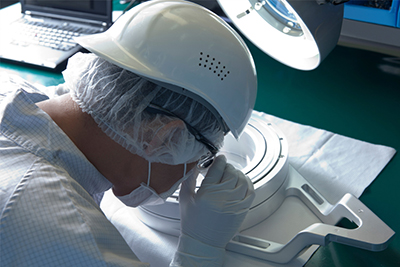Upping Your Game for Maintenance and Service
By Joseph Farah
Over the last year the impact of the global pandemic and the high demand for semiconductors in key markets have put tremendous pressure on customers to run fabs faster and harder than ever. Keeping equipment running consistently at peak levels is challenging. In this edition of Tool Talk, Applied Global Services (AGS) is offering reminders and recommendations that may help you up your game for maintenance and service and keep your production lines humming.
DON’T RUN TO FAILURE
Although we make maintenance recommendations for each tool-type we offer, when fabs are fully loaded and systems are running at full capacity, manufacturers sometimes forego a maintenance activity or delay it in order to get product out to customers.
Running a tool until it fails is a surprisingly common event, but it is never a successful strategy. Sooner or later a part fails, a process part needs to be cleaned, or an excursion occurs, potentially causing damage to the system, the production lot, or both. Routine maintenance is essential for a healthy system, and we recommend to regularly schedule maintenance. Done right, our recommended maintenance procedures will result in overall increased production.
That’s because the right maintenance planning leads to higher system readiness and the ability to support increased product demand during boom times.
It is essential to plan for parts replacement ahead of time and to schedule service with Applied that can be completed effectively in a short period in order to support tool longevity. Delaying or completely skipping maintenance activities eventually leads to longer down times and bottleneck situations which, in turn, leads to delayed product manufacturing.
Some of the tasks that we caution against skipping or delaying include maintaining hardware in moving parts such as robot bearings, lift assemblies, and pedestals. Vibrations can go undetected and cause excursions such as defects, misplacement on a pedestal, or wafer breakage. We also caution against pushing process parts beyond the limit by making sure to maintain gas flow controllers and faceplates, and by performing heater and ceramic cleaning. Finally, it is essential to regularly perform power equipment maintenance, including calibrations of RF generators, power supplies, and RF matching, all of which can have a tremendous impact on results.
KEEP SYSTEM PERFORMANCE OPTIMIZED

Delaying hardware maintenance for certain parts, such as robot bearings, happens frequently in routine maintenance because they are closed parts. Unless a fault, warning, or wafer breakage occurs, it is difficult to detect anything out of the norm. In these cases we recommend that the perfect time to maintain the robot is when a slit valve door is being replaced because it is a consumable. The transfer is already opened to change the slit valve, so it is a convenient opportunity to service the robot.
As process parts age, failures show up as increasing defects.
The issue here is that often the defects go unnoticed and create downstream issues. To avoid this, we recommend replacing faceplates or domes, within the wafer limit number, between cleans.
Power sources are another part where maintenance is often delayed beyond the recommended schedule. These are expensive parts that are repairable, and they have a big impact on process results. Performing a simple generator calibration can significantly increase their lifetime and reduce unscheduled downtime.
PERFORM SOFTWARE AND SYSTEM CHECKS
Software maintenance is not as easy as hardware maintenance simply because software can be a long recovery item. However, within the software there are routines that can both perform both software-and many system checks in a short period. These routines can also assess the functionality of the hardware.
Routine gas flow checks are simple and do not require opening a chamber or changing any parts. Leak rate checks are another quick test that will confirm the integrity of the system vacuum without disturbing the process kit.
APPLIED’S ADVICE: AVOID MAINTENANCE SHORTCUTS
We have highlighted just a few examples of areas that are critical and should be maintained in a timely way to ensure best system performance and results that meet the sold-to-spec. A good reference here is how Applied Materials manages a comprehensive service agreement. Working closely with our customers, we schedule preventive maintenance (PM) on time and ensure we have the knowledge and tools to finish that PM efficiently, with as little disruption to productivity as possible. Additionally, our company has been investing in remote support technologies for nearly two decades to improve the service efficiency we deliver to customers. (See related story in this edition of Nanochip: “Digital Tools Cut Time to Productivity.”)
When it comes to maintaining your production tools, it’s important to remember that well-planned PM time and related activities are the best way to ensure quality, productivity, and cost-efficiencies in your fab.
Upping your maintenance and service game, even when your production lines are busy, can be done effectively. Applied Materials is ready to help and support your needs.
For more information, please call the Applied Materials Global Customer Contact Center at 1-800-468-8888 (1-800-HOT-TTTT) and a local field service representative will contact you promptly to help you learn about our customer support programs. You can also reach us by email at GCC_AMNA@amat.com or online at www.appliedmaterials.com/customer-portal.

